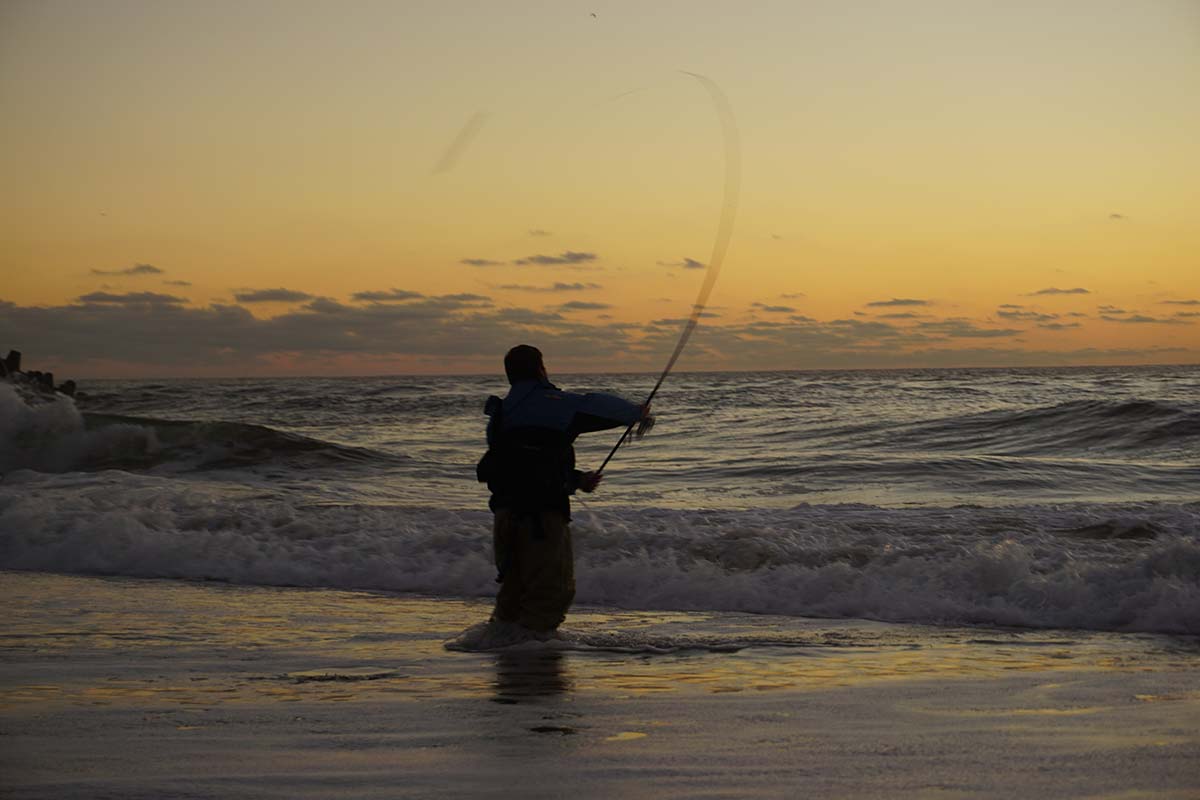
Fast or slow, whippy or stiff – how rod “action” plays a part in your surf plans du jour.
Obviously, in surf fishing, the right rod to use with any of the lures in your plug bag is the one you have in your hand at the time. Whether you are throwing pencils, swimmers or jigs, you use the rod you brought onto the beach when you got there. It may take a mental gear shift to get the best end result for casting or a more functional retrieve with a particular lure, but that rod can do what is needed and can put fish on the beach.
That, however, is the handicap of all walk-on surf fishermen. Available gear is limited to carrying capacity. Surf fishermen are minimalists anyway so one rod/reel and a plug bag/pack serve many duties on any given day. Those plug bags usually contain a wide variety of lures, though. Each one, technically, requires a specific rod action/flex characteristic for optimal presentation.
Thus, the surfcaster makes certain presumptions when choosing the weapon of the day.
- Spinning tackle for versatility
- Graphite rod for resilience, light weight and sensitivity
- Staying within the rods’ stated lure weight limits to prevent breakage
- Suitable braided line for capacity, line flow, vibration transmission and hook set power
- Reels properly proportioned for the rod and line used
At this point, choosing a rod action/flex is the next step that can help lure casting, presentation and success.
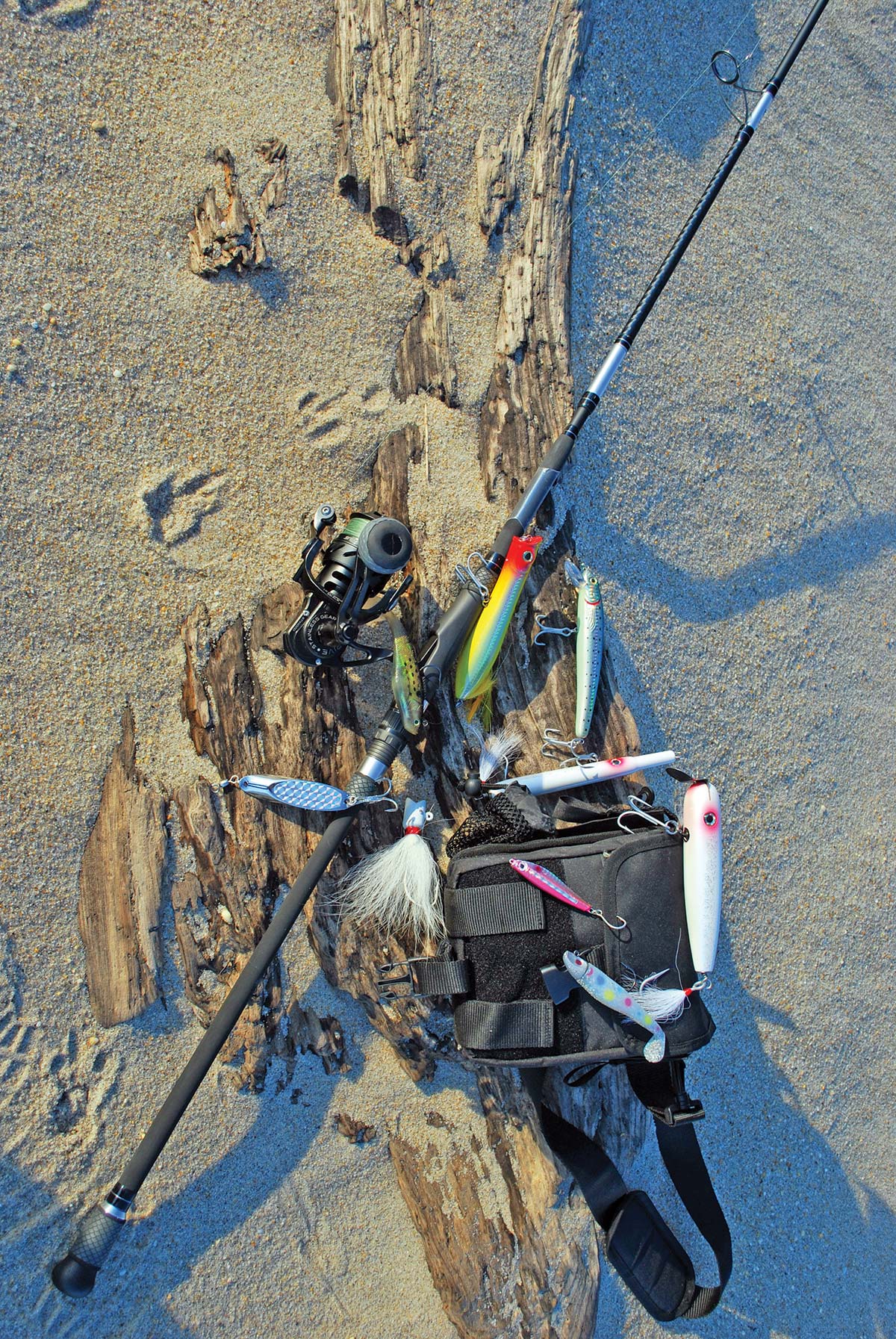
The Proper Flex
There are plenty of descriptions of the flex or “action” of a fishing rod. They include terms such as “fast tip, medium action, parabolic, slow, extra heavy” and several other designations. All of them should conjure up an image of the bend achieved in the rod on casting or on retrieve and fish fighting (the accompanying “Flex Chart” provides a rough idea of these action/flex characteristics.) It’s important to remember that each has its’ own benefits or limitations.
A wind-in-your-teeth nor’easter will demand a heavy lure to punch through the wind and into the high surf. That heavy lure needs a stiffer, heavier action rod to load properly and cast more efficiently to get enough distance to reach any fish that might be present. My mind set calls up heavy and aerodynamic bucktails and metals to get to payoff water. A light stick lure or larger profile metal lip swimmer simply won’t punch through the wind and achieve the needed distance. This is tough fishing under any and all circumstances and can be exhausting to pursue hour after hour through a full tide. But, that heavy action, stiff rod blank can put those weighty lures closer to your target than any other.
On a late August afternoon with the sun behind you and clear, easy surf, a softer, more parabolic light/medium rod and 12- or 15-pound braid will throw light fluke jigs with the ubiquitous Gulp dressing through every trough along the beach and find dinner fish. This lighter weight, lighter action outfit will allow hours of walk-and-cast fishing along miles of beach if that’s what you’re up to. That outfit can also cast small to medium metals to passing Spanish mackerel, taylor blues and even false albacore within light tackle reach. There is even a new series of Airwave Elite Light rods from Tsunami that are purpose-designed for this type of fishing. Light weight, lighter, fuller action and scaled to the smaller reels, lines and terminal tackle to be used.
Early season striped bass fishing is a toss-up between casting stick style swimming lures or weighted shads or lead head and rubber. The swimmers need a rod with a faster tip to get the blank loaded with a fairly light lure while feeling the swimming vibration of the lure on retrieve. The shad or lead/rubber caster needs a moderate fast-flex blank that will take the loading of heavier lures to about the rods’ midpoint for casting distance and still be able to feel the shad tail swim pulse or the lead bumping the bottom. The swimmers, even the factory weighted models, will not cast to the horizon so get used to relatively shorter casts and thoroughly work the entire retrieve, feeling the lure vibration and sometimes bottom bumps. Those lures with swim lips or large tail paddles will transmit their action through the line and sensitive graphite blank so the angler can sense any interruption that might indicate a fish slapping or soft taking the lure.
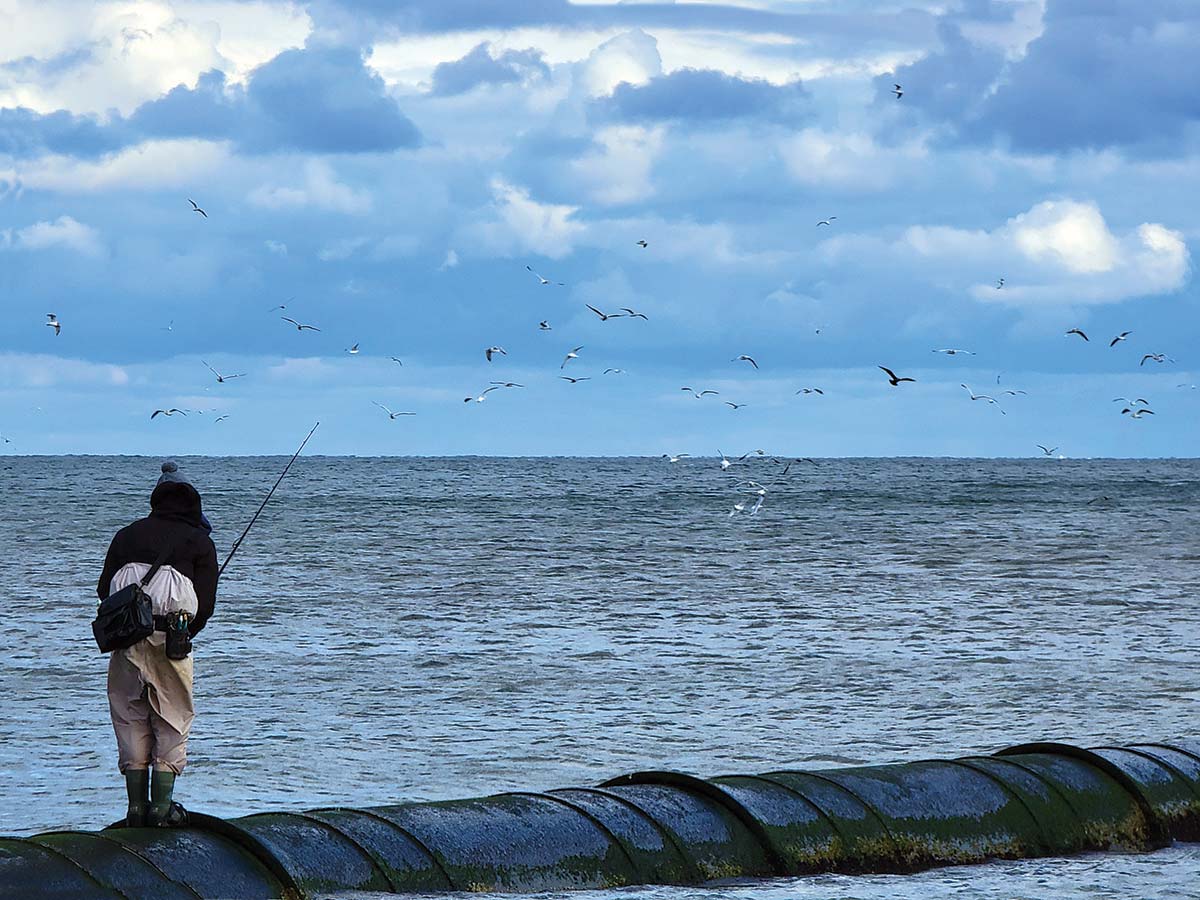
Surface Explosions
Bay beach casting in late spring can call for another lure selection and the start of popper use. Standard twitch and pop version lures can be used to reach far and seek deeper water in the bay. A deeper flex blank, bending to a point below the middle of the rod can launch these lures far enough and still impart the short tug and splash these lures require. That same blank can also produce the almost stationary splash produced by pencil poppers.
These surface lures require a reach up the blank with the rod hand to deliver the shaking of the tip that will deliver short tugs on the lure as it dances from side to side, staying almost in one small spot in the water, while the reel hand slowly turns the reel handle to just recover any slack that forms during the shaking of the rod. This tantalizing action can draw fish from a distance or depth for heart-stopping strikes. That deeper flex rod should also have reserve striking power in the lower part of the blank for sure hooksets and fighting your fish.
Popper fishing on the open beach calls for a scaling up of the tackle used to be able to handle larger and heavier poppers and to reach greater distances when casting. The rod action, however, remains the same to produce the best results regardless of the size of the tackle used.
Casting the ever popular “spook” type lures is best done with an almost parabolic action that bends to a point near the rods’ foregrip. This softer action allows a take-and-set on surface strikes and the motion the lure requires as well as the hook set and fight. Angler ability comes into play for lure presentation, hook set and for the fight to the beach. Here, too, scale can vary depending on season, quarry and weight/size of lure. A three or four size reel and an 8-foot rod with 12-pound braid will be perfect for casting 1-ounce plus lures to school stripers. Late in the season with bigger fish around, the rod becomes 9-1/2 feet, the reel a five or six size and the line to 30-pound or better line with 2-ounce and heavier lures.
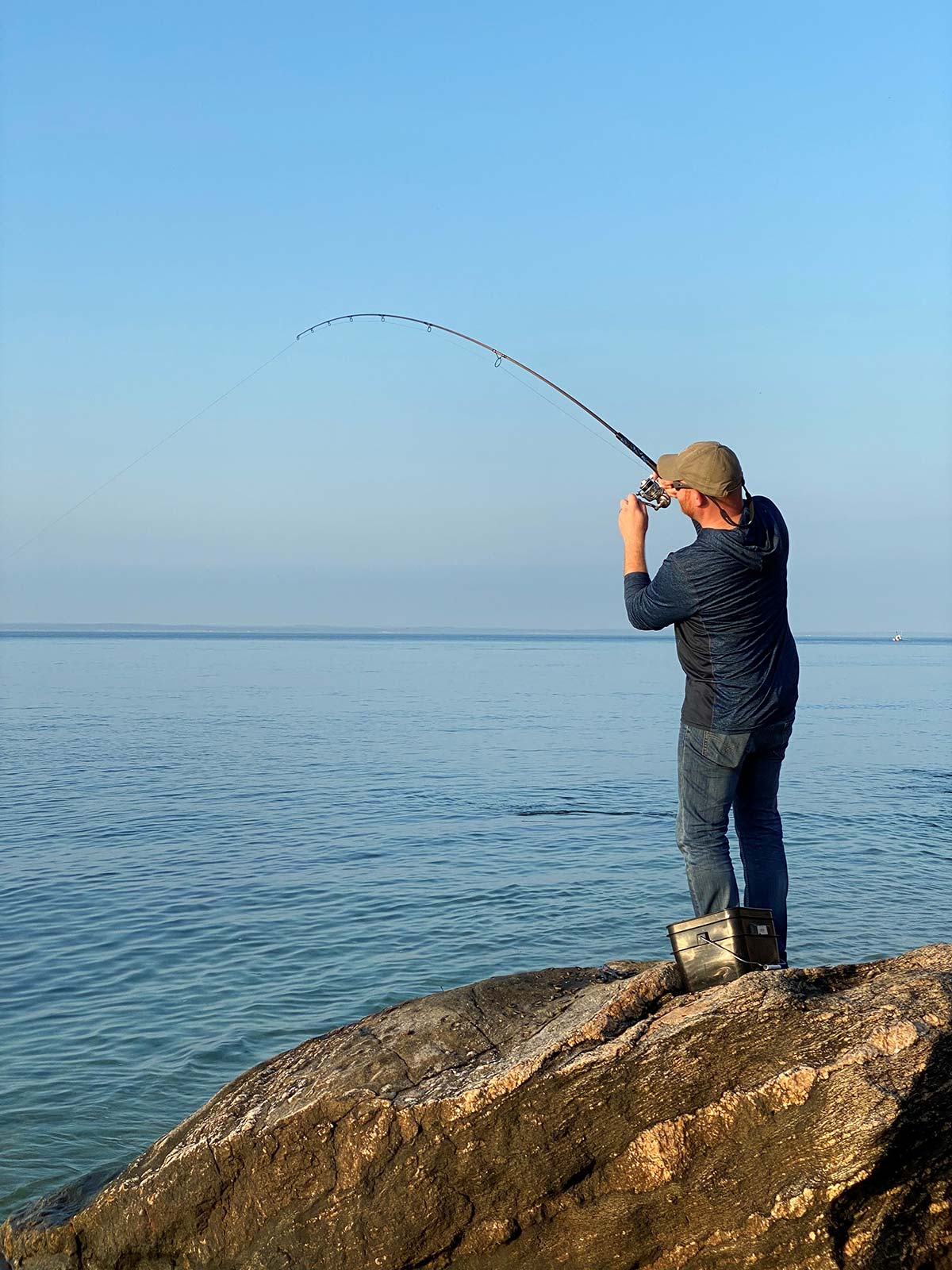
Metals, Needles & Swimmers
Long casts to breaking schools of false albacore, Spanish mackerel and bonito call for distance covering light metal lures, frequently with teasers, to reach the action on the other side of the bar. The rod to use will have a full flex to deeply load on the light lure cast and not snap off the lure. The resilience of graphite blanks will dampen the rods vibration and have it ready for imparting the right lure action and set a hook as needed. Metals used closer in will be heavier and need a mid-flex rod to cast them efficiently, get a better feel of the lure on retrieve and to set hooks quickly.
Needlefish are a unique, do-nothing type lure whether you choose the slim, straight body type or the center bulge profile. Too many anglers simply can’t cast the lure out and just slowly turn the reel handle to make the retrieve and bring the lure to any nearby fish. This lure works best with a deep flex blank to load below the halfway point. That rod will cast a variety of needlefish weights and designs comfortably and efficiently. The slow retrieve with little to no feedback from the lure can be worked well with a bent rod. Strike and hook set is accomplished with the power reserve in the rod butt.
| FLEX CHART |
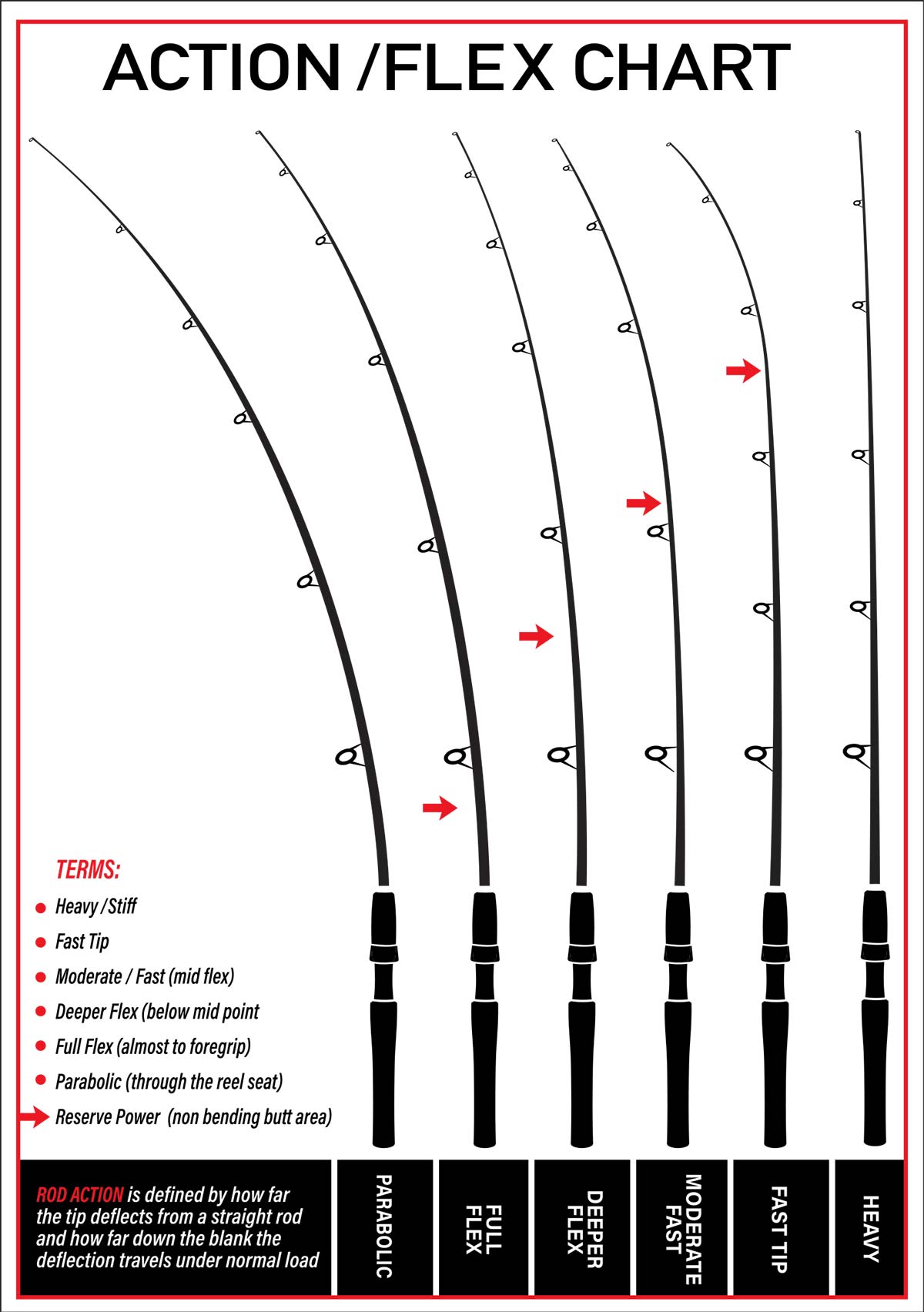
The chart shows some of the flex curves/actions to be seen in todays’ graphite rods. There is an application for all from Fast Tip to fully Parabolic actions to cast and present a wide variety of lures. |
Metal lip swimmers – typically made of wood with a shaped lip at the front of the lure body – are designed for everything from slow retrieve surface “wake” lures to diving models for deep water or currents. Most often used are the surface wake or just sub surface retrieve models. These are all big and probably the least aerodynamic lures we often throw. Snap casts with fast tip rods cause a tumble that too frequently results in line fouling before the lure hits the water, ruining the retrieve. A smooth but powerful cast with a rod that will flex to a point below the middle or fully to the foregrip will get the lure where you want it and let you feel the throbbing action as the lure swims below the surface or will help you handle the give-and-take of wave action during a surface retrieve.
While there is no “do-it-all” rod out there, you can find a do-more model to match your technique preferences. When selecting a rod for your purposes, it’s a good idea to either bring the reel you expect to use on that rod with you to check the match or ask the shop to mount a similar model on the rod so you can get a better feel for the rod/reel match.
There will be plenty of times when your plan for the day to throw swimmers is blown apart by fish boiling on the surface demanding you toss a popper. The rod in your hand, intended for swimmer use, not poppers, will now have to do the job. Here’s where you shift gears and change your casting effort/technique to something a little slower with less snap-cast power so you can move a heavier, bulkier lure out into the water and adjust the retrieve to one of regular twitches rather than a slow steady handle turn. As usual, the rod in your hand that you brought to the beach is the one to use, regardless.
There are times when stable weather systems and the continued presence of target species allow you to precisely select both the terminal tackle and the rod/reel perfect to present and retrieve that tackle. Choosing the right rod flex and action can make a big difference in both your success and your enjoyment, wherever possible.




